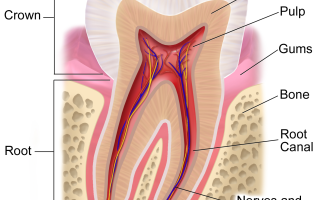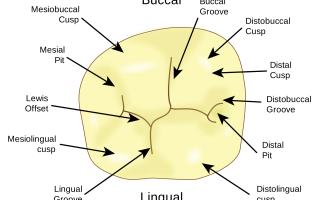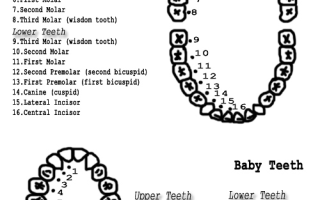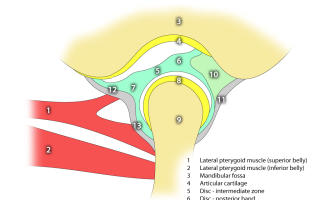- Home
- About Us
- Patient Portal
- What We Do
- Athletic / Sports Dentistry
- Bonding
- Cosmetic Dentistry
- Crowns & Bridges
- Dental Implants
- Dentures & Implants
- Emergency Appointments
- Fillings
- Geriatric Dentistry
- Oral Cancer Screening
- Pediatric Dentistry
- Periodontal (Gum) Disease
- Preventive Care
- Porcelain Veneers
- Teeth Cleaning
- Teeth Whitening
- Tooth Extractions
- Sealants
- Smile Makeover
- TMJ/TMD Treatment
- Reviews
- FAQs
- Patient Education
- Contact Us
- Blog
Navigation- Home
- About Us
- » Our Practice
- » Your Dentist
- » » Dr. Paul Doodes
- » The Park Blvd Dentistry Team
- » Dental Technology
- Patient Portal
- » New Patients
- » Payment Options
- » » Insurance
- » » Financing
- » » Discounts & Promotions
- » Patient Account Access
- » Notice of Privacy Practices
- What We Do
- » Athletic / Sports Dentistry
- » Bonding
- » Cosmetic Dentistry
- » Crowns & Bridges
- » Dental Implants
- » Dentures & Implants
- » Emergency Appointments
- » Fillings
- » Geriatric Dentistry
- » Oral Cancer Screening
- » Pediatric Dentistry
- » Periodontal (Gum) Disease
- » Preventive Care
- » Porcelain Veneers
- » Teeth Cleaning
- » Teeth Whitening
- » Tooth Extractions
- » Sealants
- » Smile Makeover
- » TMJ/TMD Treatment
- Reviews
- » Leave Us a Review
- » Recent Reviews
- FAQs
- Patient Education
- Contact Us
- Blog
A Living Database of Dental & Orthodontic Vocabulary
There are many terms you will hear used daily by dentists and their staff in the course of delivering care to their patients, maintaining patient records and preparing claims . . . but do you ever feel like your dental team uses a whole different language? Well – they do. Every profession has its own language, and Dentistry is no different when it comes to medical terminology to describe your teeth, dental conditions and the associated procedures. While many dentist do their best to use layman’s terms (dumbing-it-down) so that there can be effective communication, it is not uncommon for people to want to understand everything just a bit better.
We have put together this living database of dental vocabulary that you might hear when speaking with the dentist or the support staff. Of course please do not hesitate to ask your staff member for clarification of any terms, we are here to help make your experience as pleasant as possible!
When browsing our website you will see many of these terms used. This dental dictionary is updated often, so be sure to check back for the latest dental terms and definitions.
Simply click on the appropriate 'Glossary of Terms' letter below to get the definition of dental terms
Glossary of Terms: A
Abrasion: Removal of tooth structure due to rubbing and scraping (e.g. incorrect brushing method).
Abscess: A collection of pus. Usually forms because of infection.
Abutment: A tooth or tooth structure which is responsible for the anchorage of a bridge or a denture. The teeth on either side of a missing tooth.
Alveolus: An opening in your jaw bone in which a tooth is attached.
Amalgam: A silver/mercury mixture which is used for fillings.
Anatomy: The arrangement of the bones in your skeleton.
Anesthetic: A drug which a doctor or dentist uses to put you, your mouth, or some other part of your body asleep so you do not feel any pain during dental or medical procedures.
Anterior Teeth: Your centrals, laterals and cuspids. These are the teeth in the front of your mouth.
Anterior: An adjective used to describe things pertaining to your centrals, laterals and cuspids (your front teeth).
Antiseptic: A chemical agent which can be applied to living tissues to destroy germs.
Apex: The very bottom of the root of your tooth.
Arch: Collectively, either the teeth or the basal bone of either jaw.
Articulator: A special holder for models of your teeth. The articulator holds the models in the same alignment as your jaw so the dentist can look carefully at your bite.
Asepsis: The avoidance of potentially pathogenic microorganism. In practice, it refers to those techniques which aims to exclude all microorganisms.
Aspiration: Removal of fluids from your mouth with an aspirator.
Aspirator: A tube-like a straw which the dentist puts in your mouth to suck up all the saliva.
Attrition: Wear of teeth due to activities such as chewing.
Glossary of Terms: B - CBitewing: A kind of dental x-ray which is taken with the teeth biting together. The main function of this kind of x-ray is to detect cavities in between teeth and height of bone support.
Bleaching: Cosmetic whitening of teeth using peroxide.
Bridge: A prosthesis which is fixed inside the mouth to replace missing teeth.
Bruxism: Clenching or grinding of your teeth especially at night.
Buccal: The tooth surface which is next to your cheeks. Usually only posterior teeth touch your cheeks, so people usually use the term "buccal" only when talking about your back teeth.Calculus: A hard deposit that forms when you do not brush your teeth so the plaque hardens. Calculus is also known as tartar.
Canine: The third tooth from the middle of the jaw. There are 4 of them. They are the longest teeth in human. Another name for the cuspids.
Canker sore: An ulceration with yellow base and red border in the mouth. It can be caused by trauma or the herpes simplex virus.
Carcinogenic: Cancer-causing.
Caries: Another name for cavities (tooth decay).
Cariogenic: Decay-causing.
Cast: A model of teeth.
Cavity: A small hole in one of your teeth caused by tooth decay.
Cementation: The process of "gluing" the appliance/prosthesis on the associated area.
Cementum: A bony substance covering the root of a tooth.
Central: The two upper and two lower teeth in the very center of your mouth.
Chlorhexidine: An anti-microbial agent. It is available in many forms such as gels and rinses. It is an effective agent in controlling gum diseases.
Clasp: A metal arm extends from a removable partial denture. It helps to hold on to natural tooth structure and thus provide anchorage for the denture.
Cold sore: An ulcer or blister on lip. A form of herpes simplex.
Composites: Tooth-colored restorative materials.
Cosmetic dentistry: Aesthetic improvement of the color and shape of teeth performed by a general dentist.
Cross contamination: Passing bacteria, viruses or AIDS indirectly from one patient to another through the use of improper sterilization procedures, unclean instruments or "recycling" of dental products.
Cross-bite: An abnormal bite relationship of the upper and lower jaw. The lower teeth/tooth align toward the cheek/lip side more than the upper teeth/tooth.
Crown (porcelain/plastic/metal): A crown is almost like a "cap" on a tooth. It covers the tooth partially or totally above the gum to restore its function and outlook.
Curettage: A periodontal procedure where your gums are scraped to remove bacteria.
Cuspal: The chewing or tearing points of the cuspids, bicuspids and molars.
Cuspid: The pointy teeth just behind the laterals. These teeth have one cusp (or point). Cuspids are also called canines.
Glossary of Terms: D - E
Decalcification: The loss of calcium from your teeth. This weakens your teeth and makes them more susceptible to decay.
Decay: The rotten part of the tooth.
Deciduous Teeth: Your primary, or "baby teeth".
Dentin: The calcium part of a tooth below the enamel containing the pulp chamber and root canals.
Dentistry: A branch of medicine that involves diagnosis, prevention and treatment of any disease concern about teeth, oral cavity and associated structures.
Dentition: The position, type and number of teeth in upper and lower jaw.
Denture (immediate/complete/partial) (overdenture, temporary): An artificial object to replace missing teeth and their neighboring structures. There are many different types of dentures to satisfy different treatment requirements and patient preferences.
Denturist: The person who specializes in fabricating dentures. A Denturist is not responsible for making any type of diagnosis or carrying out any other treatment (e.g. removing teeth).
Desensitization: A procedure to reduce the sensitivity of teeth.
Diagnosis: The process of identifying dental disease.
Diastema: The space in between two adjacent teeth.
Direct contamination: Direct contact with impurities or germs (for example, by a patient sneezing on the assistant).
Disinfectant: A chemical agent which is applied onto inanimate surfaces, for example chairs, to destroy germs.
Disinfection: A cleaning process which destroys most microorganisms, but not highly resistant forms such as bacterial and mycotic spores or the AIDS virus.
Disposable materials: Materials intended for one use and discarded (e.g.: gloves, paper gowns, cotton rolls, sponges, etc.).
Distal: Toward the back of the mouth. For example, you might say that the first bicuspid is distal to the cuspid. A directional indication in the mouth. It indicates the direction away from the middle of the jaw.Edentulous: No teeth. Someone is said to be edentulous where all of their teeth are missing from either their upper or lower jaw.
Enamel: A hard ceramic which covers the exposed part of your teeth.
Endodontist (Endo): A dentist who specializes in root canals and the treatment of diseases or injuries that affect the root tips or nerves in your teeth.
Erupt, Eruption: When a new tooth comes in, the tooth is said to erupt when the tooth breaks through the surface of your gums, so you can see the tooth in your mouth.
Excision: The action of cutting something off.
Exfoliate: To fall out (your deciduous teeth exfoliate and permanent teeth erupt into the space).
Extraoral: Outside of your mouth. For example, neck pads are said to be extra oral products since they go outside of your mouth.
Glossary of Terms: F - I
Filling: A restoration placed on a tooth to restore its function and appearance.
Filtrum: The dimple or indentation under the nose directly above the upper lip.
First Bicuspid: The teeth just behind the cuspids. These teeth have two cuspals (or points).
First Molar: The teeth just behind the second bicuspids. These teeth have a level surface with four cuspals.
Flipper: A temporary denture to replace missing teeth during the waiting period for long term treatment.
Floss: A thread/tape that goes in between your teeth for cleaning.
Fluoride Treatment: Teeth treated with fluoride agents, like gel or rinse. It helps to prevent tooth decay.
Fluoride: A compound of fluorine (an element) which be put in different forms such as water, gels and rinses to strengthen up teeth. The flouride hardens your teeth and prevents tooth decay.
Framework: A metal skeleton of a removable partial denture to support the false teeth and the plastic attachments.
Frenum: Small pieces of pink colored skin that attach your lips, cheeks and tongue to your mouth. Examples include the piece of skin under your tongue which sticks out when you pick up your tongue, and the piece of skin which sticks out when you pull out your lips.General dentist: primary care provider for patients in all age groups who take responsibility for the diagnosis, treatment, management and overall coordination of services to meet patients' oral health needs.
Geriatric dentist: general dentist who primarily treats senior citizens.
Gingivae: Another name for your gums.
Gingival hypertrophy: The abnormal enlargement of the gingiva surrounding the teeth caused by poor oral hygiene.
Gingivitis: The mildest form of gum disease: reversible inflammation of gum tissue not including the bone. The earliest sign is bleeding gum.
Gums: The pink areas around your teeth.Hemorrhage: Bleeding.
Homeostasis: Stop bleeding.Impacted tooth: An unerupted tooth that somehow has gotten stuck and cannot come in.
Impaction: A condition where a tooth is not able to come in normally or stuck underneath another tooth or bone.
Implant: A replacement for one of your missing teeth. The implant is different than a bridge in that the implant is permanently attached into your jaw. A device (usually "screw-like") put in the jaw bone to support a false tooth, a denture or a bridge.
Impression: A mold taken by some jelly-like material loaded on a tray.
Incisal: The biting edge of your centrals and laterals.
Incisor: The four upper and lower front teeth. Another name for the centrals and laterals.
Inlay: A restoration (usually is gold, composite or ceramics) fabricated in the lab cements on tooth like a missing puzzle. It helps to restore the normal function and outlook of the tooth.
Interproximal: The space in between two adjacent teeth.
Intraoral: Inside your mouth. For example, orthodontic rubber bands are called intraoral products since the rubber bands are designed to go in your mouth.
Irrigation: The technique of using a solution to wash out your mouth and to flush debris.
Glossary of Terms: J - N
Labial: The tooth surface next to your lips or things mounted on the tooth surfaces next to your lips.
Lateral: The teeth just adjacent to the centrals.
Lingual: The tooth surface next to your tongue or things mounted on the tooth surfaces next to your tongue.Malocclusion: Misalignment of teeth and or jaws.
Mandible: Your lower jaw.
Mandibular: Pertaining to your lower jaw.
Masticate: To chew your food and mix the food with saliva.
Maxilla: Your upper jaw.
Maxillary: Pertaining to your upper jaw.
Mesial: Forward or front. For example, your cuspid is mesial to your bicuspid. The mesial surface of your bicuspid is the part of the bicuspid closest to your cuspid. The side of the tooth towards the middle of the jaw.
Microair abrasion: A drill-free technique using an instrument resembling a tiny sand blaster that delivers tiny aluminum oxide particles to the surface, where they cut away the decayed area.
Midline: A plane through the very center of your mouth perpendicular to your nose.
Mixed dentition: The situation when both deciduous and permanent teeth are present.
Molar: The last 3 upper and lower teeth on both sides of the mouth.
Mouthguard: A device to be worn in the mouth. Depends on the design of it, it prevents injury on teeth and/or jaw during teeth grinding or sporting events.Nightguard: A mouthguard which is worn at night time.
Numerical notation for teeth: The numerical notation for teeth is an alternate to Palmer's notation. In this notation, the centrals are designated as 1's, the laterals as 2's, the cuspids as 3's, the first bicuspids as 4's, the second bicuspid's as 5's, etc.
Glossary of Terms: OOcclusal plane: The imaginary surface on which upper and lower teeth meet.
Occlusal radiograph: The only x-ray that is taken without a precision(tm) x-ray holder. The x-ray film for this procedure is shaped like a large oatmeal cookie. You are asked to bite on the x-ray film and the top of the x-ray machine is positioned over your nose for a maxillary occlusal x-ray or under your chin for a mandibular occlusal film. The x- ray shows the whole arch.
Occlusal surface: The chewing surface of the tooth.
Occlusal: The chewing or grinding surface of the bicuspid and molar teeth.
Occlusion: The way the upper and lower teeth close together.
Onlay: A restoration covering the entire biting surface of a tooth.
Open bite: The situation that the upper teeth not able to contact the opposing lower teeth.
Oral and maxillofacial surgeon: Treats and surgically corrects diseases, injuries and defects of the mouth and jaws.
Oral pathologist: Examines oral tissues for evidence of suspected abnormalities, such as cancer.
Oral: Pertaining to the mouth.
Orthodontics: A special field in dentistry which involves diagnosis, prevention and treatment of bite abnormalities or facial irregularities of the teeth and their correction, as by means of braces and retainer.
Osteoblasts: Cells which aid the growth and development of teeth and bones.
Osteoclasts: Cells which help create the sockets in bones. For example, osteoclasps create the openings in your jaw bone to hold your teeth.
Overbite: The overlap of upper teeth and lower teeth when they close together.
Overhang: The portion of filling material that hangs beyond the border of the cavity.
Glossary of Terms: P
Palate: The roof of the mouth.
Panoramic radiograph: An x-ray film to obtain the wide view of upper and lower jaw and their associated structures.
Pathogens: Disease producing organisms that can exist in many different places (e.g. air, dust, countertop surfaces, the body, etc.).
Pathology: The study of abnormal (diseased) tissue conditions.
Pediatric dentist: Provides treatment and care for children from birth through adolescence.
Pedodontist (Pedo): A dentist who specializes in the treatment of children's teeth.
Perforation: An opening on a tooth or other oral structure.
Periapical: The surrounding of the bottom of the root of a tooth.
Periodontal disease: Inflammation and irritation of the gums which, if left untreated, can cause the jawbone and teeth to deteriorate and fall out.
Periodontal: Pertaining to your gums. For example, periodontal disease is gum disease.
Periodontics: A specialty of dentistry involving diagnosis, prevention and treatment of supporting unit of teeth.
Periodontist (Perio): A dentist who specializes in the treatment of diseases of your gums, diagnoses and treats diseases of the tissues supporting and surrounding the teeth, especially periodontal disease.
Permanent teeth: Adult's teeth. The first permanent tooth usually comes in around 6 years old.
Pin: A piece of "nail-like" metal. It usually is used for better retention of a filling.
Plaque: Is a colorless, odorless, sticky substance containing acids and bacteria that causes tooth decay.
Polish: A process to make the tooth or filling or other denture smooth and glossy.
Pontic: The false tooth in a bridge or denture to replace the missing tooth.
Porcelain veneers: Ultra-thin shells of ceramic material bonded to the front of the tooth.
Post: A big pin which can be made with different materials such as metal or carbon. Its function usually is to support a big buildup on a tooth.
Posterior Teeth: Your bicuspids and molars. These are the teeth in the back of your mouth.
Posterior: An adjective used to describe things pertaining to the back of your mouth or your back teeth.
Pre-authorization: An approval from the particular authority (usually an insurance company in dentistry) before any action (treatment) is carried out.
Pre-medication: Medication needed to be taken before treatment.
Premolar: The two teeth located in front of the molar.
Prescription: A written statement (from a doctor to a pharmacist) regarding the type, the amount and direction of the use of a medication for a patient. In dentistry, prescription can also be a written statement on preparation of an appliance from a dentist to a lab technician
Primary teeth: The first set of teeth which come in. Primary teeth are also called "baby teeth" or deciduous teeth.
Prophylaxis/prophy: The procedure of teeth polishing. It also means the prevention of diseases.
Prophylaxis: professional cleaning of the teeth by a dentist or hygienist
Prosthesis: An artificial part to replace missing teeth and their associated structures.
Prosthodontics: A specialty of dentistry involving diagnosis, treatment planning and fabrication of artificial parts to replace missing teeth and their associated structures.
Prosthodontist: Constructs artificial appliances designed to restore and maintain oral function by replacing missing teeth and other oral structures such as dentures.
Proximal: Refers to the surfaces of teeth that touch the next tooth; the space between adjacent teeth is the interproximal space.
Public health dentist: Concerned with the dental health needs of entire communities, and can design and administer large-scale prevention and dental care programs by compiling and analyzing statistics.
Pulp canal: Another name for the pulp chamber.
Pulp chamber: The very inner part of your tooth containing nerve cells and blood vessels.
Pulp: The inner most part of a tooth. It contains nerves and blood vessels inside a tooth.
Pulpectomy: The removal of the whole pulp inside a tooth.
Pulpotomy: The removal of the top part of the pulp inside a tooth.
Glossary of Terms: Q - R
Quadrants: The four parts of your mouth, that is the upper left, the upper right, the lower left and the lower right.Radiograph: Another name for an x-ray.
Radiosurgery: Surgery technique that uses radio waves to produce a pressure-less, bloodless incision; can also be used to heat bleaching agents.
Recall: The regular checkup and teeth cleaning appointment.
Recementation: The process of "glue" the appliance/prosthesis back on the associated area.
Resin: Plastic material used in bonding, restorative and replacement procedures.
Restoration: An item a dentist uses to restore the normal function of a tooth or an area in the mouth. It can be a filling, a crown, a bridge, etc.
Restorative dentistry: Process of restoring missing, damaged or diseased teeth to normal form and function, performed by general dentists.
Retainer: A device used for maintaining the position of teeth in the jaw in orthodontic treatment.
Retreatment: The process of repeating the root canal treatment.
Root canal treatment: A treatment for the root canal inside the tooth.
Root canal: A procedure where the nerve of a heavily decayed tooth is removed from the tooth replaced with a filling material
Root canal: The canal that runs inside the root of the tooth. It contains the nerves and blood vessels inside the tooth.
Root planning: The action of cleaning on the root area of teeth.
Root: The part of your tooth in your gums, it anchors the tooth to its supporting units.
Rubber dam: A rubber sheet that fits around teeth. It isolates the treatment area from the rest of the oral cavity.
Glossary of Terms: S - T
Sagittal plane: The longitudinal vertical plane that divides the mouth into two halves (left and right).
Sanitization: A cleaning process which reduces germs to a "safe" level.
Scaling: The action of cleaning of teeth below the gumline.
Sealant: A thin layer of plastic-like material covering the grooves and pits on a tooth to prevent cavity.
Second bicuspid: The teeth just behind the first bicuspids. These teeth also have two cuspals (or points).
Second molar: The teeth just behind the first. These teeth also have a level surface with four cuspals.
Secondary teeth: Your permanent teeth (e.g. the second group of teeth to come in).
Sedation: The use of medication to calm down a patient.
Space maintainer: A gadget used to maintain a space in your mouth. You would use a space maintainer when you lose one of your baby teeth. The space maintainer will keep a space in your mouth until a permanent tooth comes in to fill the space.
Space maintainer: An appliance to maintain the space in between teeth.
Special patient: Person with a disability who requires particular dental care needs.
Splint: An appliance or a material to prevent movement of a mobile part.
Sterilization: A process where a medical material is treated to remove all possible germs and other forms of life.
Supernumerary teeth: Some people have extra teeth. These are called "supernumerary teeth".Tartar: Another name for calculus
Temporomandibular joint (TMJ): The joint that links two jaws.
Third Molar: The teeth just behind the second molars. These teeth also have a level surface with four cuspals. Wisdom Teeth.
TMD: Temporomandibular disorder; problems relating to your temporomandibular joint which include locking of the jaw, frequent headaches, sore jaw muscles, and painful clicking of the jaw.
TMJ: An abbreviation for the "temporomandibular joint" The "temporomandibular joint" is the joint where your lower jaw connects to your skull.
Torus: An outgrowth on bone. It usually develops on the roof of the mouth or around the premolar area on the lower jaw.
Treatment card: A sheet of paper or special index card used to record your treatment progress.
Glossary of Terms: U - Z
Universal numerical notation for teeth: The universal numerical notation is an alternative numerical notation for teeth. In this notation, your upper right third molar is designated as tooth#1, and then you number each tooth sequentially moving right to left and down across your mouth.Veneer: A layer of tooth-colored material (can be porcelain, composite, or ceramics) attaches to the front of the tooth. It is usually for better outlook of the tooth.
Wisdom tooth: Another name for the third molar. The eighth (also the last tooth) tooth from the middle of the jaw.
Xerostomia: Dry mouth
Glossary of Terms: 0 - 99912 year molar: Another name for your second molar
6 year molar: Another name for your first molar
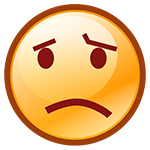
If the dentist or staff member does not speak in layman's terms, ask him or her to repeat the diagnosis or prescribed treatment in a way you can comprehend. We want you to know what's going on with your teeth so you can take the appropriate steps to strengthen your dental health.
In need of immediate care?
We provide dental services after working hours and on weekends. Call us at (630) 469-0800
Latest News & Updates
Park Blvd Dentistry
45 S Park Blvd Ste 190
Glen Ellyn IL 60137
Tel: (630) 469-0800
Fax: (630) 474-0597
Email: pbd@ParkBlvdDentistry.com

